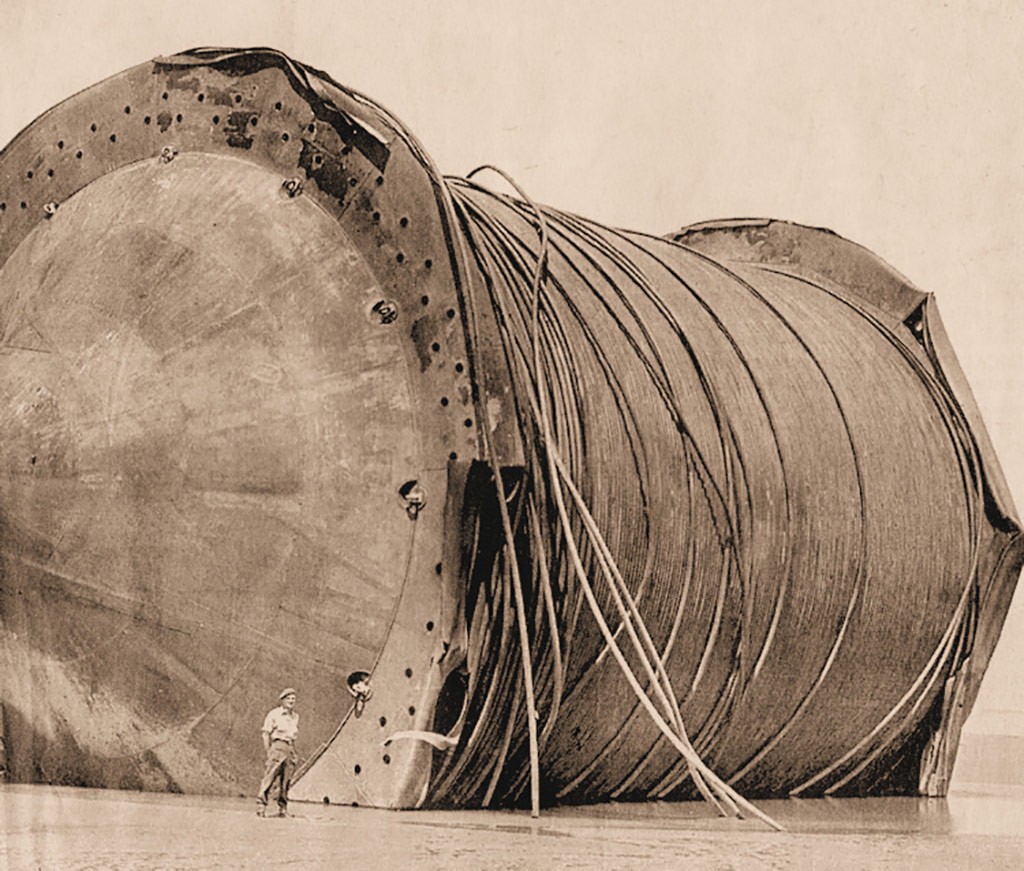As armies are vast consumers of fuel, there was a long recognised need for a guaranteed supply of fuel after a possible invasion of Allied troops in Europe. The transport of fuel through oil tankers proved to be risky because of possible attacks and unpredictable weather. Already in 1942 plans and preparations were made to lay pipelines beneath the ocean between Southern England and France. After secret and successful trial operations in Medway and Scotland, two pipelines were laid in the summer of 1944, from Shanklin on the Isle of Wight to Port-en-Bessin and from Dungeness to Ambleteuse.
In Dungeness, short pipelines that arrived via the railway were connected and wound around huge ‘conundrums’, towed across the Channel by tugs and laid in the ocean. Pumping stations were disguised as ordinary buildings to reduce the threat of enemy attack. Some of these buildings – ice cream parlours, garages and bungalows - still remain today, such as Pluto House in Dungeness.
After initial teething problems, around 4 million litres of fuel was being delivered per day and by the end of the war nearly 700 million litres had been delivered across to France - a feat of engineering deemed key to the successful invasion of Europe after D-Day.
